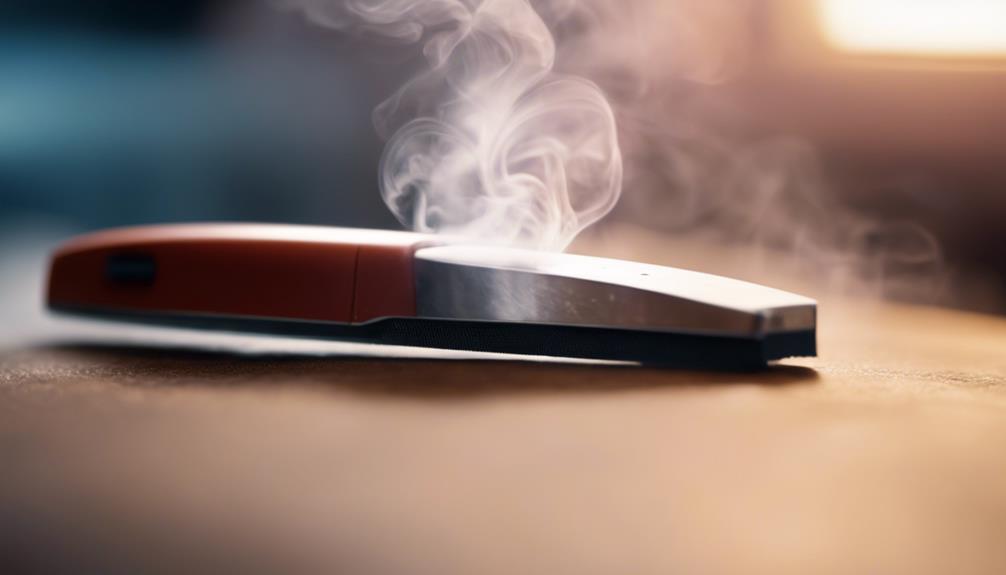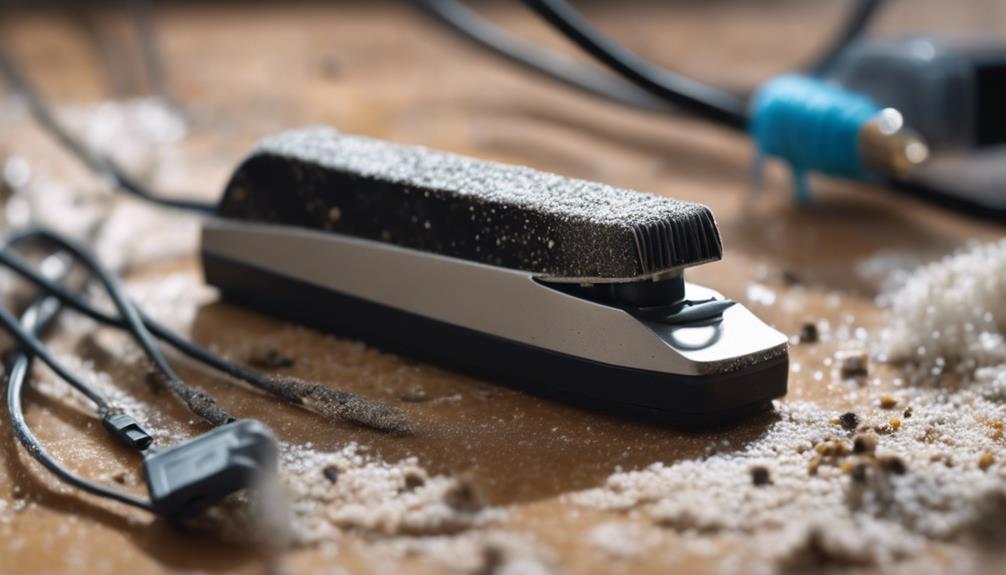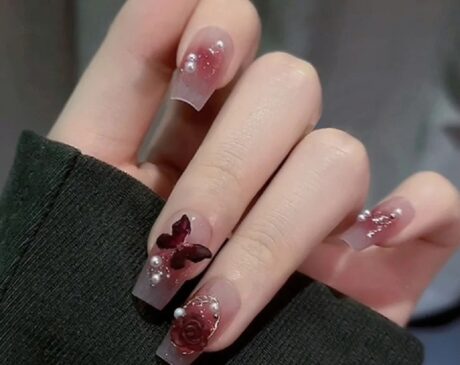What Are the Disadvantages of Electric Nail File?

Electric nail files can potentially damage the nail bed if used incorrectly, leading to pain, inflammation, and infections. Over-filing poses risks such as nail thinning, weakness, and increased fragility. Heat build-up is another concern, potentially causing discomfort and damage to the natural nail. Limited precision control may result in uneven shaping and over-filing. Maintenance and cleaning challenges can affect the device's longevity and performance. These disadvantages highlight the importance of using electric nail files cautiously. Understanding these risks is crucial for maintaining healthy and beautiful nails.
Key Takeaways
- Potential nail bed damage from incorrect use
- Risk of over-filing leading to weak, brittle nails
- Concerns about heat build-up causing discomfort
- Limited precision control for accurate shaping
- Maintenance and cleaning challenges affecting device longevity
Potential Nail Bed Damage

Electric nail files pose a risk of potential damage to the nail bed, which can lead to various complications if not used properly. The nail bed is a crucial part of the nail unit responsible for nail growth and health. When an electric nail file is used incorrectly or aggressively, it can cause trauma to the nail bed, leading to pain, inflammation, and potential infections. Nail bed damage can result in changes in nail texture, shape, and color, affecting the overall appearance of the nails.
To prevent potential nail bed damage, it is essential for nail technicians and individuals using electric nail files to exercise caution and proper technique. This includes using the appropriate file grit, avoiding excessive pressure, and maintaining a gentle touch during the filing process. Regularly assessing the nail bed for any signs of damage or discomfort is also crucial in preventing complications. By prioritizing nail bed health and practicing safe filing techniques, the risk of potential damage from electric nail files can be significantly reduced, promoting overall nail wellness.
Risk of Over-Filing
Over-filing nails with an electric nail file can lead to detrimental consequences for nail health and appearance. Excessive filing can result in thinning of the nails, making them more prone to breakage and damage. When nails are over-filed, it weakens their structure, causing them to become fragile and easily breakable. This can be particularly problematic for individuals who desire long, strong nails as over-filing can hinder their ability to grow healthy nails.
Moreover, over-filing can also lead to pain and discomfort. By filing the nails too aggressively or for an extended period, individuals risk exposing the sensitive nail bed underneath. This can cause pain, redness, and sensitivity in the nails, making daily activities such as typing or picking up objects uncomfortable.
To prevent the risk of over-filing, it is essential to use an electric nail file with caution and to follow the recommended guidelines for nail filing. Being mindful of the pressure applied and the duration of filing can help maintain nail health and prevent over-filing-related issues.
Heat Build-Up Concerns

Excessive use of an electric nail file can result in concerns regarding heat build-up during the filing process, potentially impacting the overall experience and safety of nail care procedures. Heat build-up is a common issue when using electric nail files for an extended period or at high speeds. The friction generated between the nail file and the nail plate can lead to heat accumulation, causing discomfort or even pain for the client. Moreover, excessive heat can damage the natural nail, causing it to become weak or brittle over time.
Clients seeking nail services value a comfortable and safe experience, making it essential to address heat build-up concerns during nail filing. To mitigate this issue, technicians should regulate the speed and pressure applied during the filing process, allowing for adequate ventilation to dissipate heat. Additionally, using cooling techniques such as intermittently pausing the filing process or applying cooling agents can help prevent discomfort caused by heat build-up. Prioritizing client comfort and safety by being mindful of heat build-up concerns is crucial for providing a positive nail care experience.
Limited Precision Control
Precision control when using an electric nail file is essential for achieving accurate and desired nail shaping results. Limited precision control can be a disadvantage of electric nail files, as the speed and power of the device may make it challenging to maneuver with finesse. This lack of precision control can result in over-filing, uneven shaping, or accidental damage to the nails and surrounding skin.
For individuals seeking precise and detailed nail work, the limited control offered by some electric nail files may not meet their expectations. It is crucial to have the ability to adjust the speed and pressure of the nail file according to the specific needs of each nail, which can be more difficult with certain electric models.
To overcome this limitation, users can practice with the electric nail file to develop a steady hand and better control over the device. Additionally, choosing models with adjustable speed settings and ergonomic designs can help improve precision when shaping nails with an electric file.
Maintenance and Cleaning Challenges

When it comes to electric nail files, users may encounter maintenance and cleaning challenges that can impact the longevity and performance of the device. Proper maintenance is crucial to ensure that the electric nail file operates effectively and remains in good condition. One common challenge is the accumulation of nail dust and debris within the file's components. This buildup can hinder the device's performance over time, leading to decreased efficiency and potentially damaging the motor.
Cleaning an electric nail file requires attention to detail and patience. Users must disassemble the file carefully, following the manufacturer's guidelines, to clean the internal components thoroughly. Additionally, some models may have specific cleaning instructions that users need to adhere to, such as using a small brush to remove debris gently. Failure to clean the device regularly can result in decreased performance, overheating, or even permanent damage.
Regular maintenance and cleaning are essential practices to prolong the life of an electric nail file and ensure optimal performance for professional and personal use.
Frequently Asked Questions
Can an Electric Nail File Cause Electric Shock?
An electric nail file can cause electric shock if not used properly. Ensure the device is unplugged when not in use, avoid contact with water, and follow manufacturer instructions. Regular maintenance and care can prevent electrical accidents.
Will an Electric Nail File Damage Natural Nails?
While electric nail files can be efficient in shaping nails, improper use or excessive pressure can potentially damage natural nails. It is essential to follow proper instructions, use appropriate attachments, and avoid prolonged or forceful filing to prevent harm.
Is It Safe to Use an Electric Nail File on Acrylic Nails?
When considering the safety of using an electric nail file on acrylic nails, it is generally safe if done correctly. However, improper use can lead to over-filing, weakening of the acrylic, and potential damage to the nail bed.
How Often Should I Replace the Filing Heads?
Regularly replacing filing heads is crucial for maintaining optimal performance and hygiene. As a general rule, consider replacing them every 3-6 months, or sooner if they show signs of wear or damage. This ensures efficient and safe nail care practices.
Can an Electric Nail File Be Used on Children's Nails?
An electric nail file can be used on children's nails, but caution and expertise are required to ensure safety and prevent injury. Always supervise children during this process and use gentle settings.




